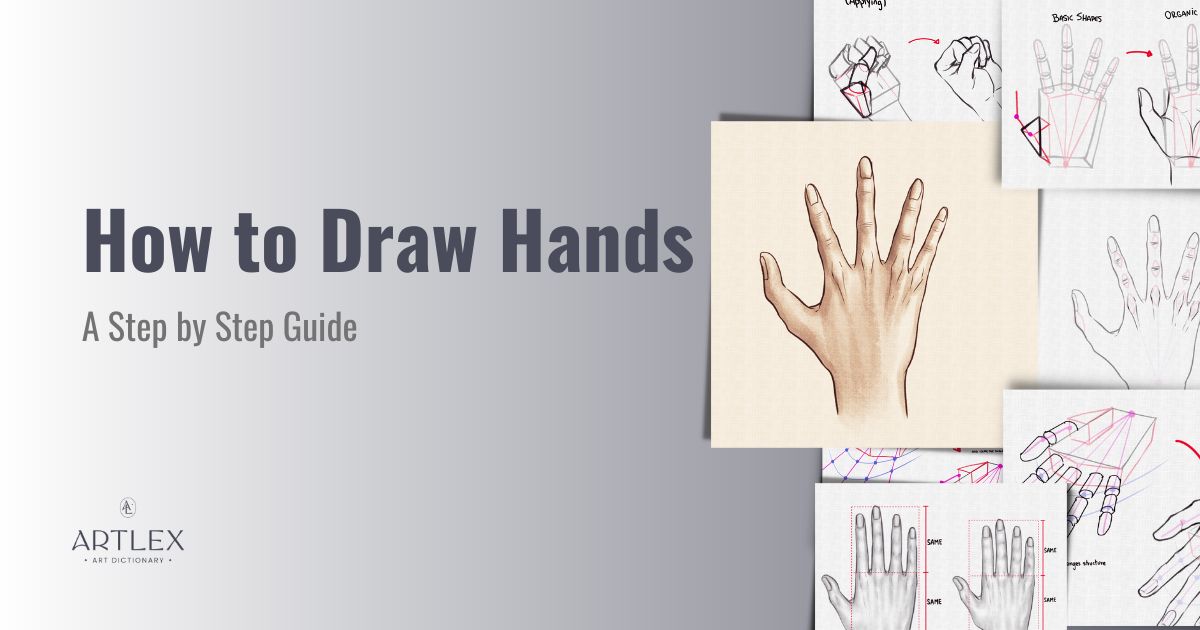
Yes, you read it right.
Hands.
The first nightmare of all artists.
At some point in our artistic journey, we all have been scared of drawing hands, we all have tried to draw them and messed up and we all have ended up giving up and avoiding them for as long as possible.
No? just me?
Well, whether you had a complicated relationship with hands or not, as an artist we all have been in that starting point where we don’t know where to go or what to do, and that’s why I’m here. Today, I’m going to guide you through the process of learning to draw hands.
And if you’re a beginner and drawing hands seems like an impossible task, keep reading and at the end of this article, you won’t feel so lost!
What You’ll Learn in this Guide
- The proportions and structure of a hand
- How do fingers work?
- How to draw a hand from different angles.
- How to draw and shade a hand from scratch.
Materials Needed for this Tutorial
- A piece of paper
- A graphite pencil from the gradation HB
- A graphite pencil from the gradation 4B
- Eraser
- Blending tool
- A ruler
Video Tutorial
All the Steps in this Guide
See below all the steps that this guide offers, laid out in one big image:
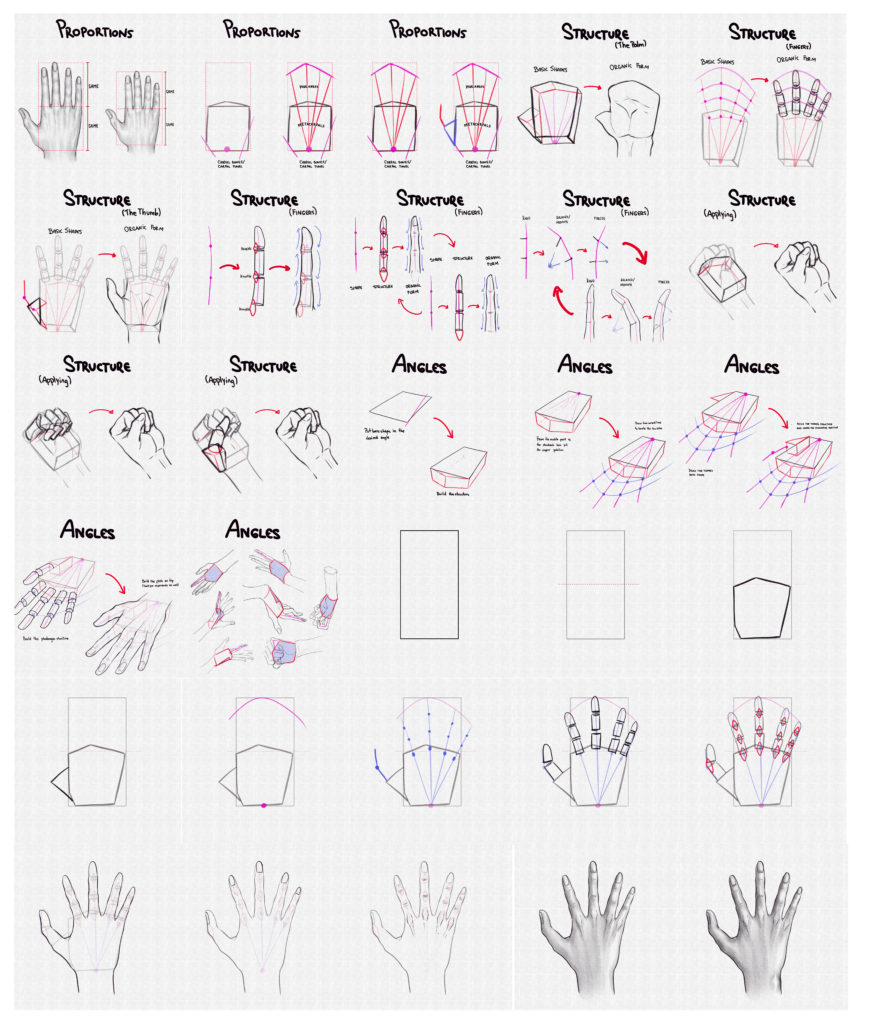
Section 1: The Proportions and Structure of a Hand
For these steps, we’re going to use a piece of paper (recommended Fabriano paper), a soft graphite pencil from the gradation HB to 2B, and an eraser.
1. Proportions

Every hand is unique. All of them go more or less by the same proportions though. The length from the top of the finger to the middle of the knuckle has to approximately be the same as the palm of the hand.
2. What About the Fingers?

Something that’s a bit difficult to get for beginners is the right position of the fingers, and to determine that we don’t have to necessarily look through anatomy images. it’s enough to find the middle point of the base of the hand and pull 5 lines that will represent our fingers.
Also the basic shapes for hands has a small triangle on top to help us understand the height difference between our fingers.
Let’s not forget the hands are not fully rectangular, so shaping them according to the type of hand we want to draw is important. The pink lines are the areas of the rectangle that I’ll cut for this one.
3. The Thumb

For the thumb were going to take our structure and add a small triangle at the side. From the border of that triangle, we’re going to pull an angled line to represent the thumb.
4. The Palm

For the palm, were going to take our structure lines and turn them into shapes, from these shapes we can build around an organic form. Again, take a look at the kind of hand you want to draw. Is it chubby? Is it skinny? The structure works either way, however, it would look different for different types of hands.
If you’re unsure, you can always practice with your own hand.
How to Draw Fingers
1. Building the fingers

It’s very useful if not vital to locate the position of the knuckles before adding any shapes, especially if you don’t have any experience drawing hands, to do that easily, it would be enough to draw three curved lines as shown and point the knuckles positions in the intersections. Once you have that ready, use cylindrical shapes to form every phalange of the fingers’ basic shapes.
2. The Thumb – Part 2

To turn the thumb into the organic form of a hand, observation is necessary, notice how the skin folds around the thumb and the palm lines are different? Many have made the mistake of confusing the thumb’s skin folds for palm lines.
But remember, the palm lines are constant, the thumb folds change with movement.
3. The Fingers – Part 3

The reason I didn’t include the fingers’ organic form in part 1 was because I could write and entire article about finger structure and movement, but let’s just check the basics for now.
The fingers are composed by the phalanges, and the knuckles. There is a small knuckle between every phalang and a big one between the phalanges and the metacarpal bones.
When changing from basic shapes to organic forms. It’s important to remember that fingers are fleshy on the inside.
Since the knuckles are on the back of our hand, that part, when drawing we can represent that with small bumps and that would give the idea of a finger better than a sausage like shape.
4. The Fingers – Part 4

Yes, more about the fingers. But those guys are special, what can I do? Let’s check how the fingers behave when viewed from the front and back as well.
The knuckles are the thickest part of our finger, so when drawing hands, especially boney ones, the knuckles are definitely going to stand out.
5. The Fingers – Final part

I know! But it’s necessary so just bear with it a little longer.
When relaxed, the fingers tend to bend inwards, however as the fingers are one of that parts of our body we use the most, we all have for sure tried to see how far they could be stretched back and how hard were you able to press them together.
The divisions in our fingers move as well, when our fingers are rigid the lines stay horizontal, but as we move our fingers we can see how they change their angle.
Make sure to remember this when drawing hands. An usual beginner mistake is to place those lines incorrectly.
10. Applying the structure – Part 1

Let’s take a random hand and break it down into the basic shapes to see how would it work.
For example for this pose and angle the palm can be represented as shown, for that block that would also help us locate the fingers.
11. Applying the structure – Part 2

Now, on top of our basic palm shape, building the fingers will be so much easier!
12. Applying the structure – Part 3

Now let’s include the thumb.
The shape moves just lie out thumb does. Try to imitate the movement and feel with your own hands the movement of the thumb.
How to Draw Hands from Different Angles
1. Perspective

When drawing the hand from different angles, perspective is one thing we have to keep in mind. Using our basic box shape as a guide will help us overcome the hardest part of perspective, since it’s way easier to out a rectangle in perspective than a whole hand.
Once you have your rectangle you can start building the structure around.
2. Position the fingers

Same as earlier, pulling lines from the middle of the palm’s base will help us locate our phalanges and keep our hand proportionate.
3. The Thumb

Start by drawing a triangle then build the shape under it. Place the phalanges of the thumb and you’re done!
4. Construct the Hand

Build the shapes for the fingers and then draw the hand. Sounds easy right? Well, it actually is! But you’re going to need something more.
To be able to identify the outlines of flesh and muscle for every pose and angle is necessary to study hands extensively.
This guide will just help you understand the behind-the-scenes better.
5. Practice!
I’m not going to lie to you, you won’t learn how to draw hands in an hour. Maybe not even in a day or a week. You’ll need to practice quite a bit.
But follow this small tip and when looking at references, identify first the palm rectangle structure and the first phalange you see.

Try to build your hand around those two structure points and I’ll assure you, you’ll learn how to draw hands from any pose, angle, and shape for sure!
How to Draw and Shade a Hand from Scratch
Now, come draw your first hand with me. I’ll walk you through every step from building to shading.
For these steps you’re going to need both of your graphite pencils, your eraser and your ruler.
Step 1: Draw a Rectangle
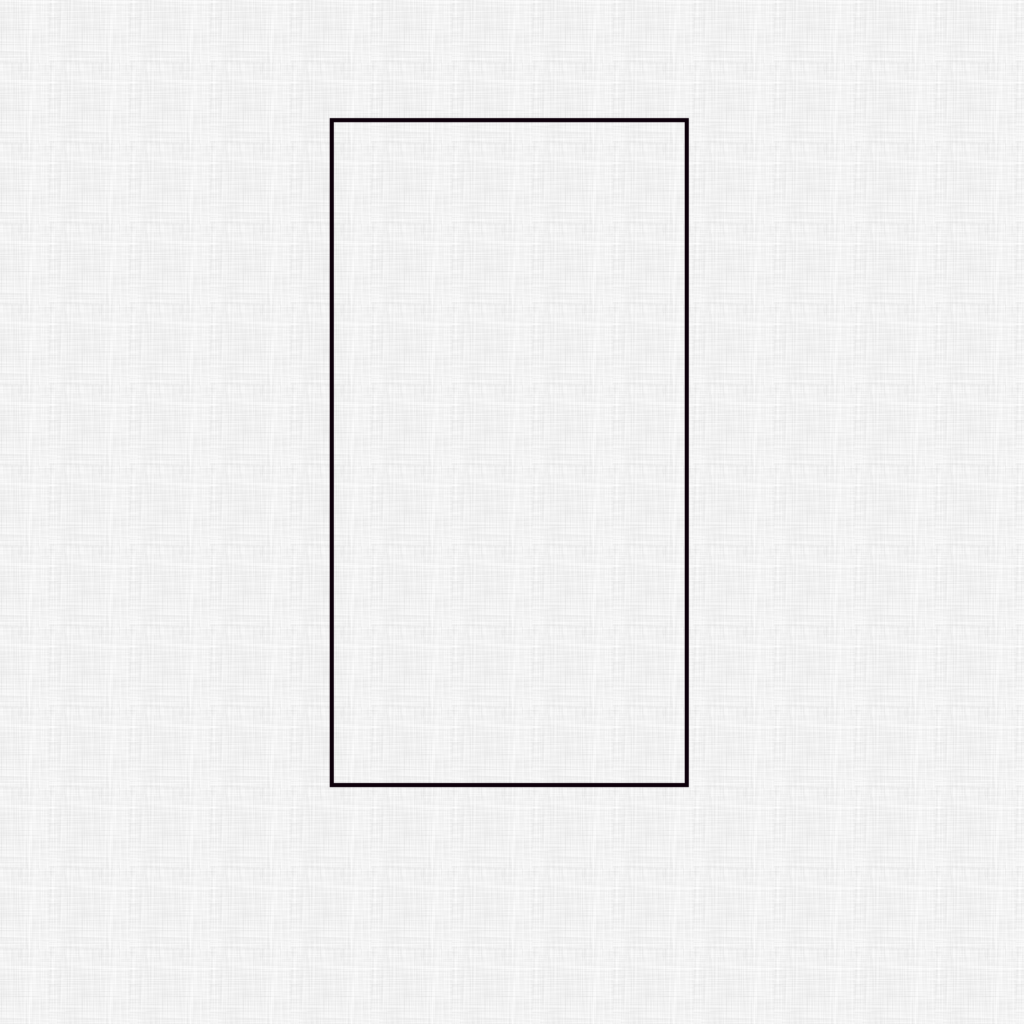
Yes, as simple as it sounds, this rectangle will be the size of your hand, so draw it as big as you want your hand to be.
Step 2: Split your rectangle in half.
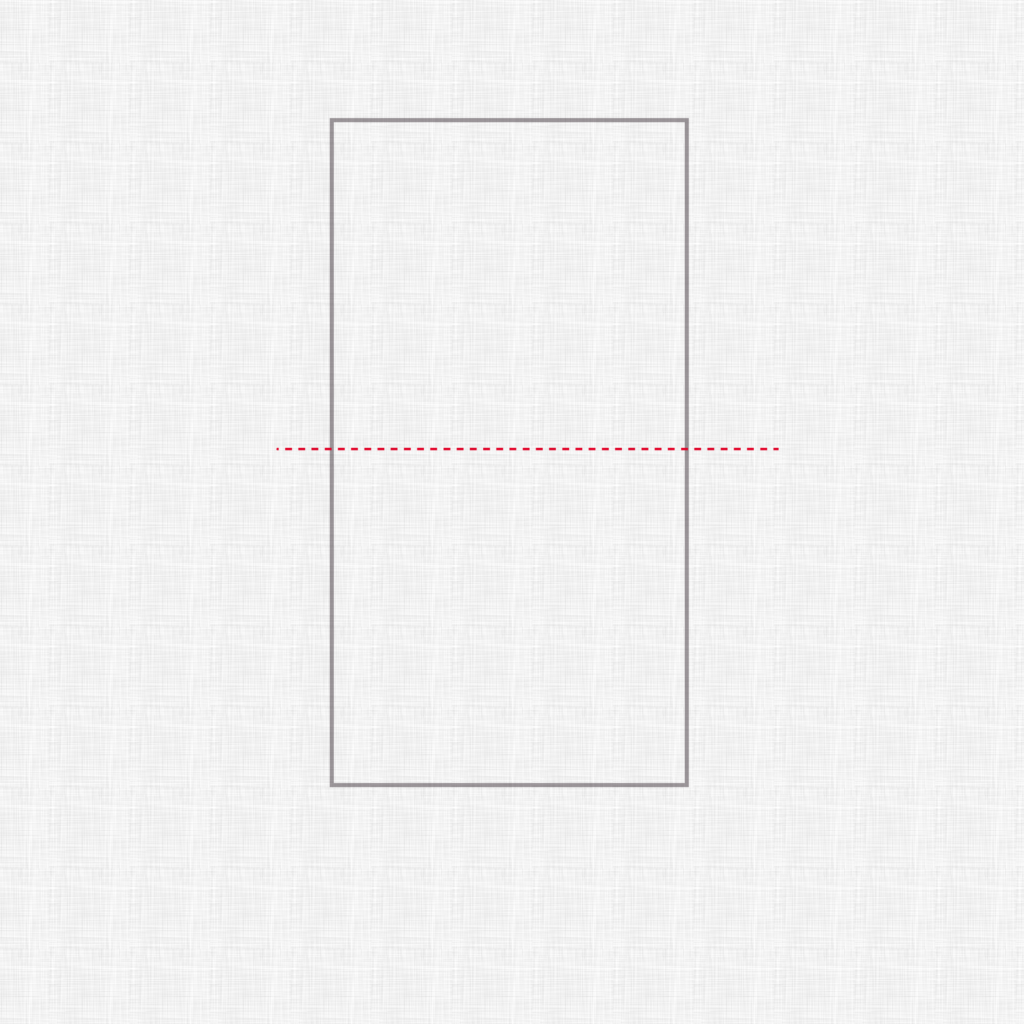
Measure the exact half of your rectangle and draw a soft line cutting your rectangle in half.
Step 3: Draw your Palm Structure Shape
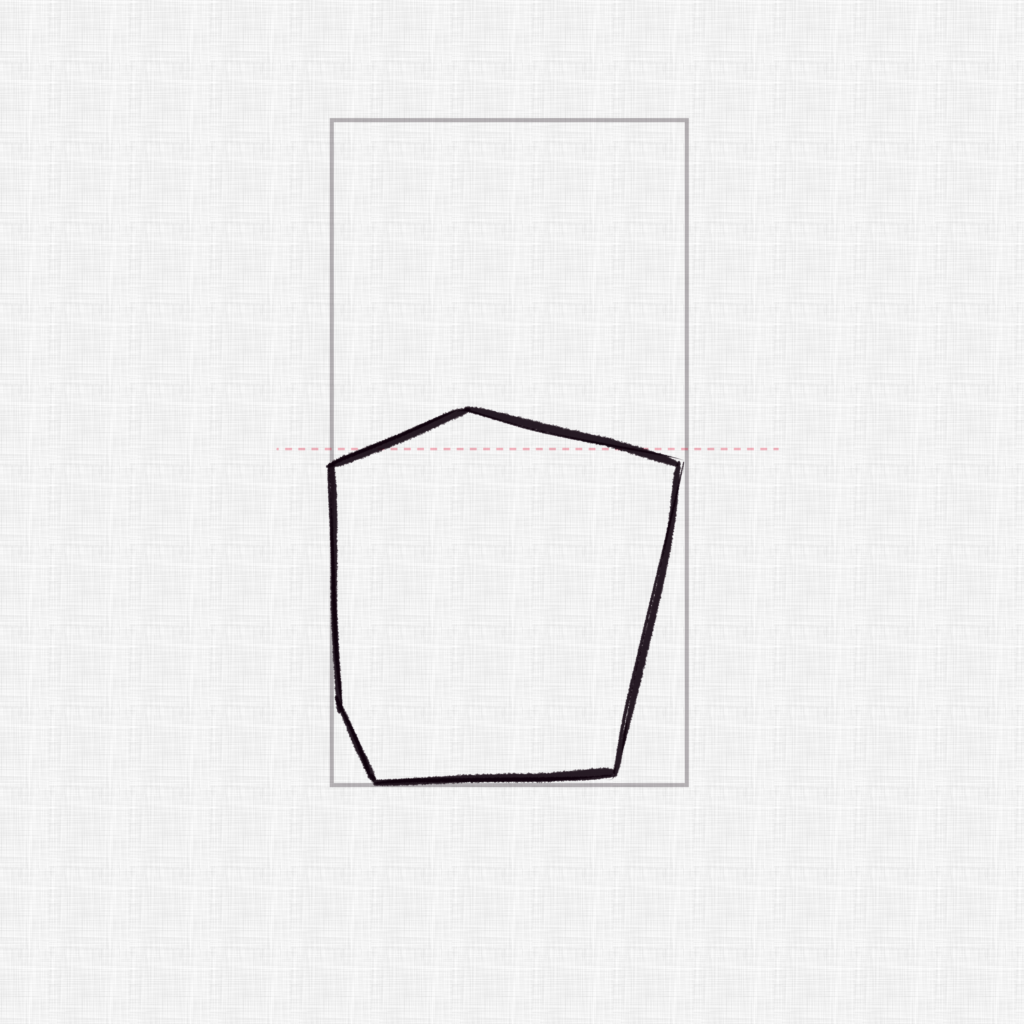
If you don’t know how to do that then go check the structure section of the article. But making it more dynamic by cutting a portion of the rectangle near the pinky position, an even smaller portions near the thumb, and adding a small triangle on top would be enough
Step 4: Add the Thumb Structure Shape
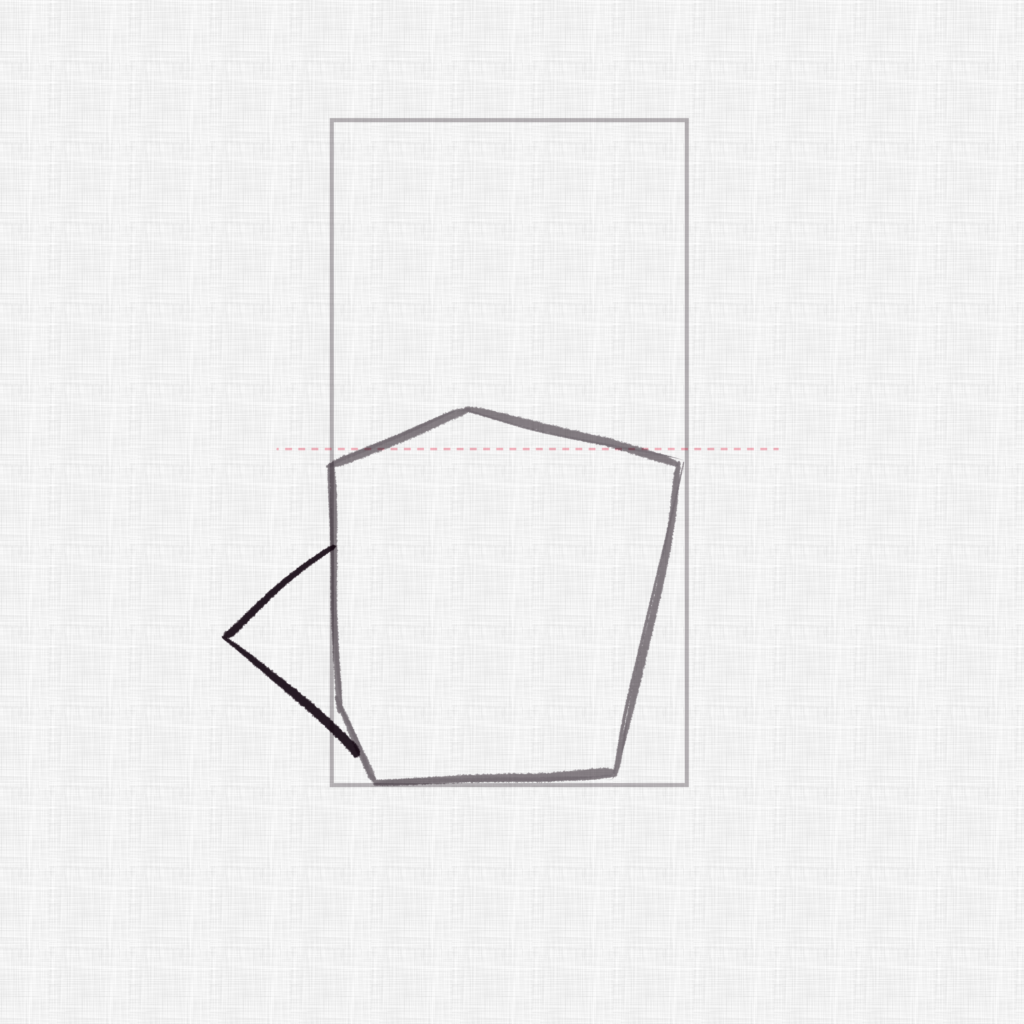
Just add a small triangle. Make it as wide as you want your thumb to be extended.
Step 5: Set the Base for the Fingers
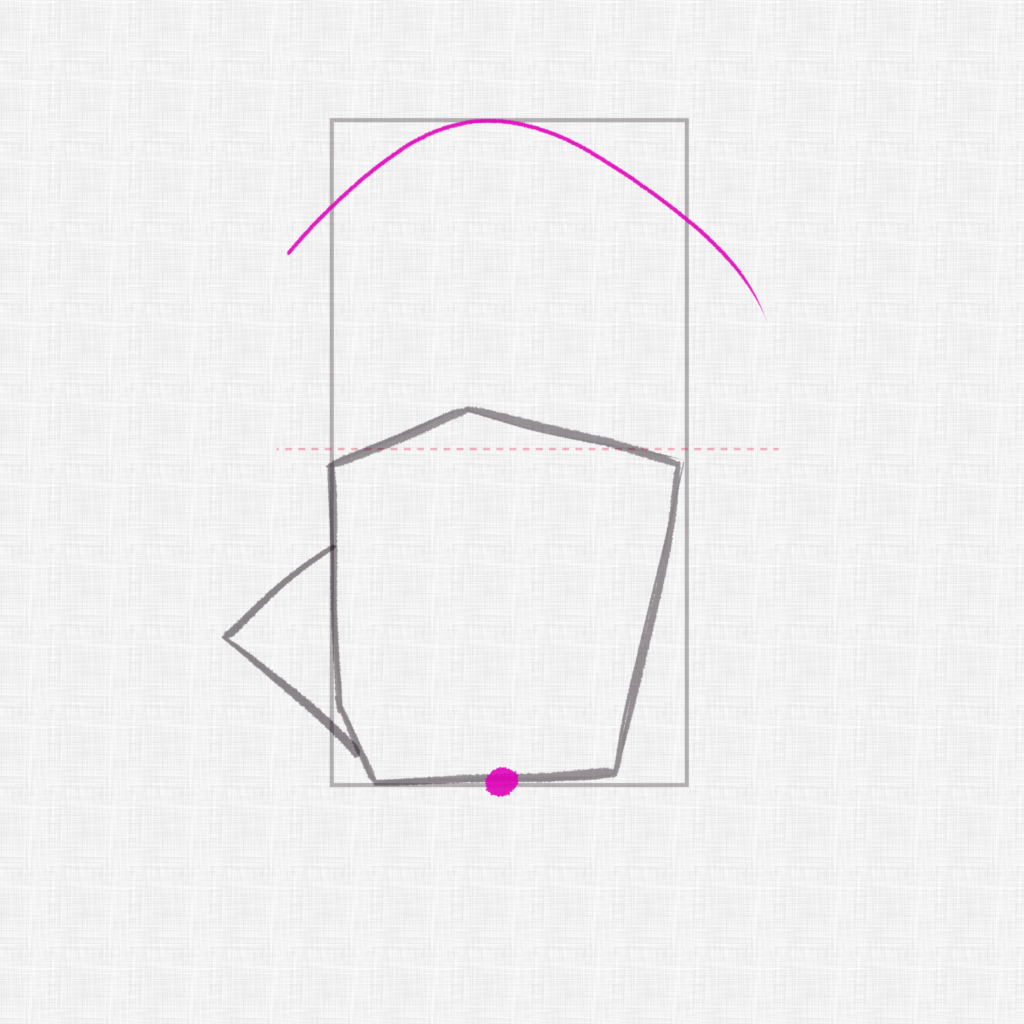
Locate the middle point of the palm and trace a curved line on the top, be careful to not go over the rectangle.
Step 6: Locate the Knuckles and Set the Thumb’s Structure
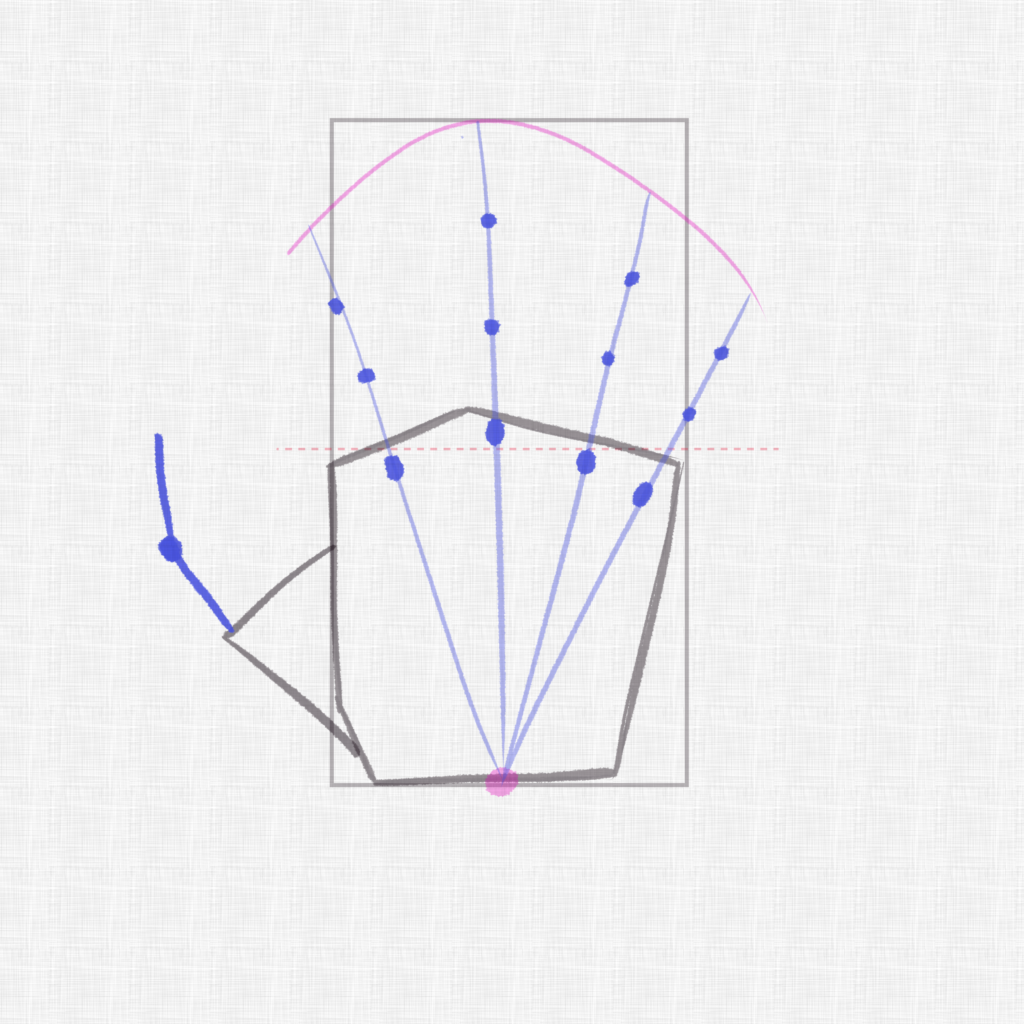
Cutting the fingers sections in equal parts, signal the knuckles softly and draw the lines for your thumb, in the position you want it to be.
Step 7: Build the Fingers
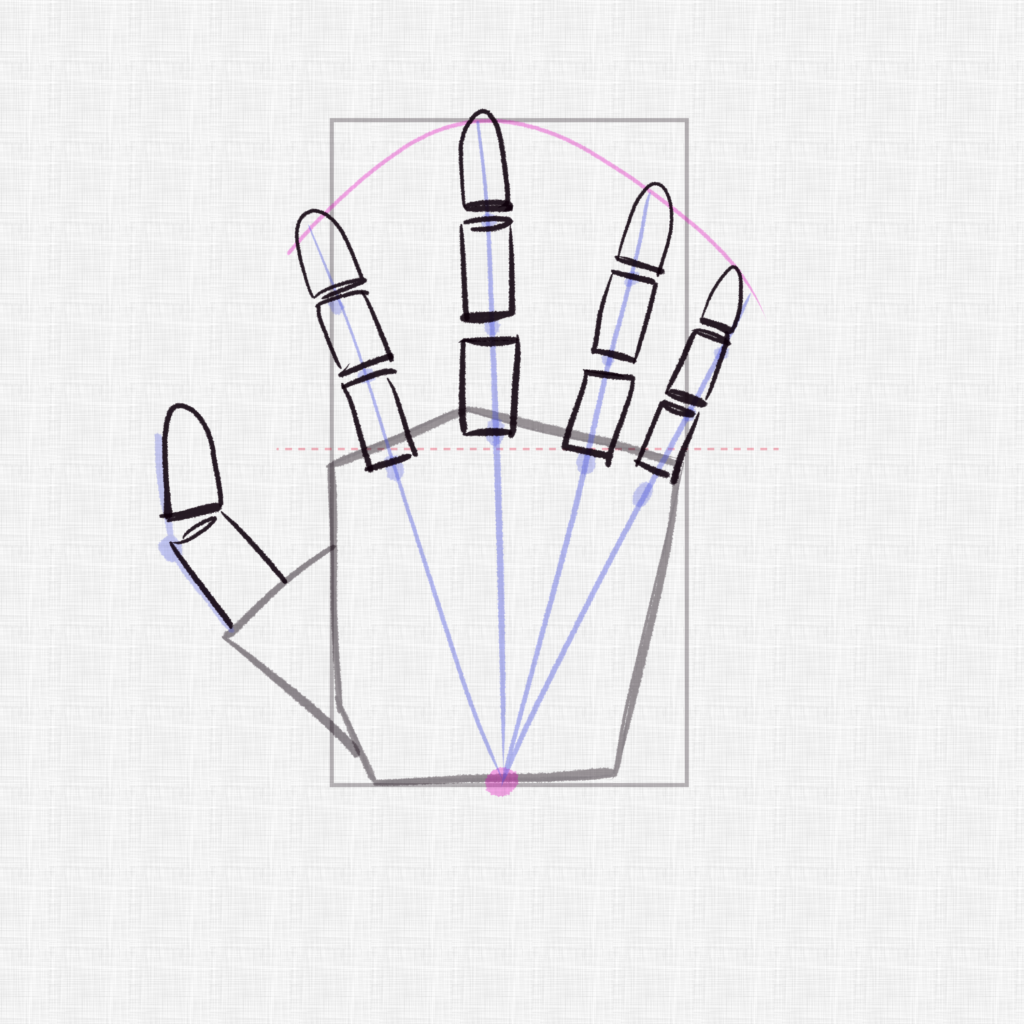
Since we’re taking it slow, we’re going to build the finger by sections as I showed you in the fingers part of this article, remember, cylindrical shapes.
Step 8: Add the Knuckles
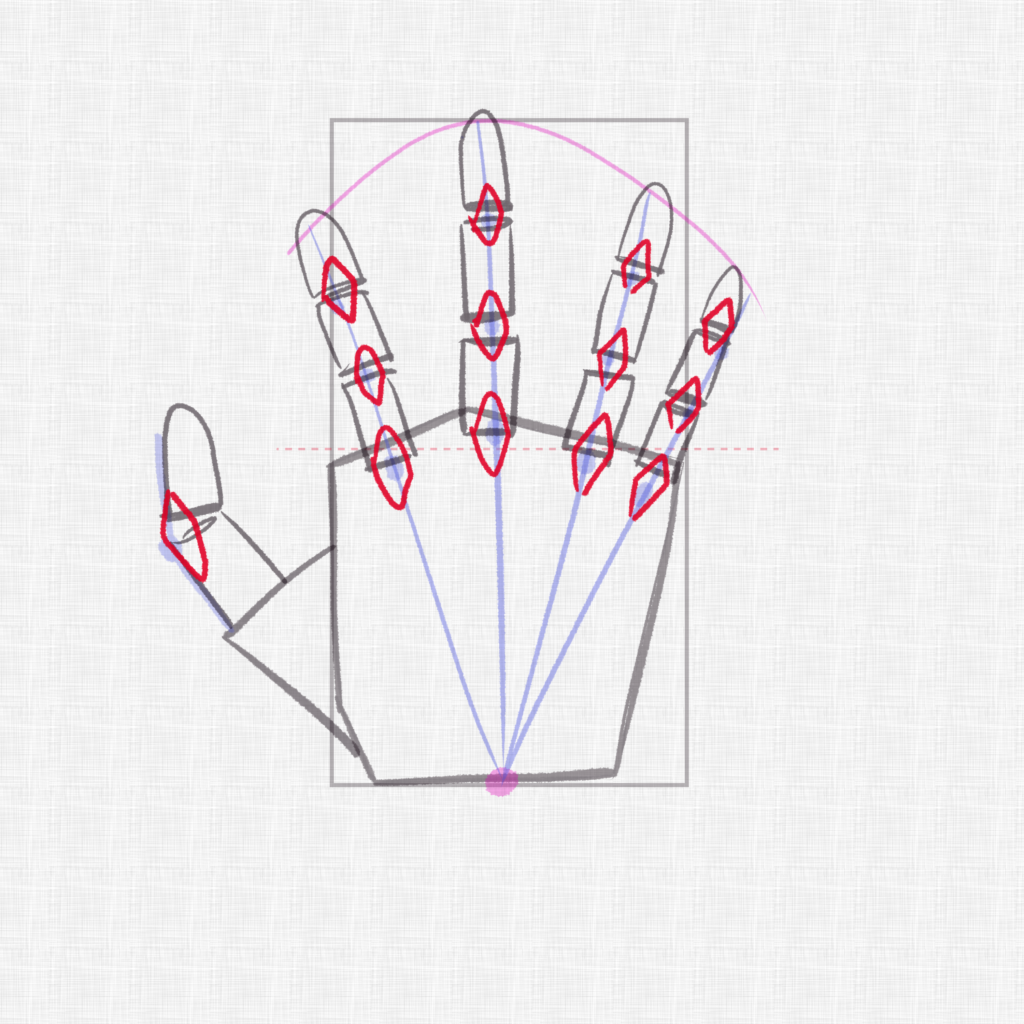
Softly signal the knuckles as diamond-like shapes, making the upper knuckles smaller than the lower ones.
Step 3: Build the flesh around.
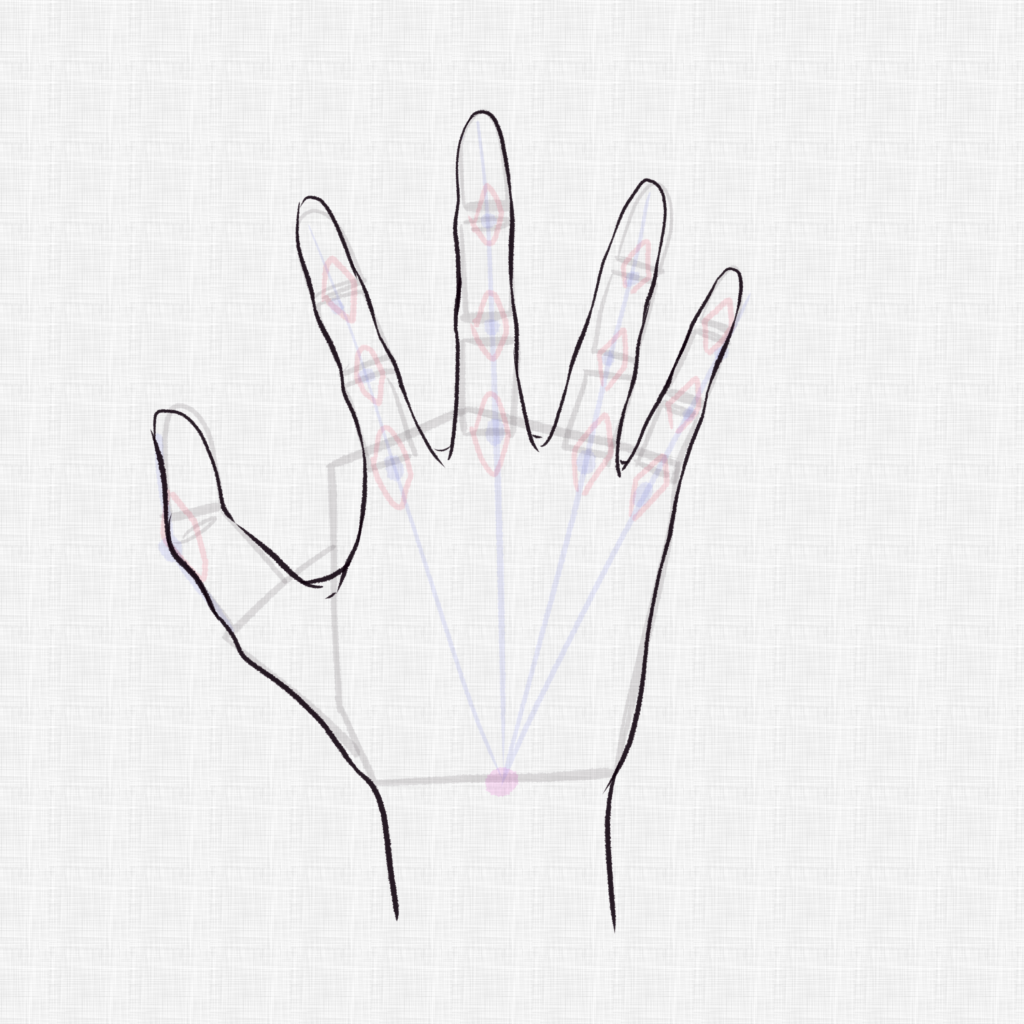
Erase your guidelines and start building the flesh around. With soft and curvy shapes draw the outline of your hand, taking the knuckles and skin folds into consideration.
Step 4: The Nails
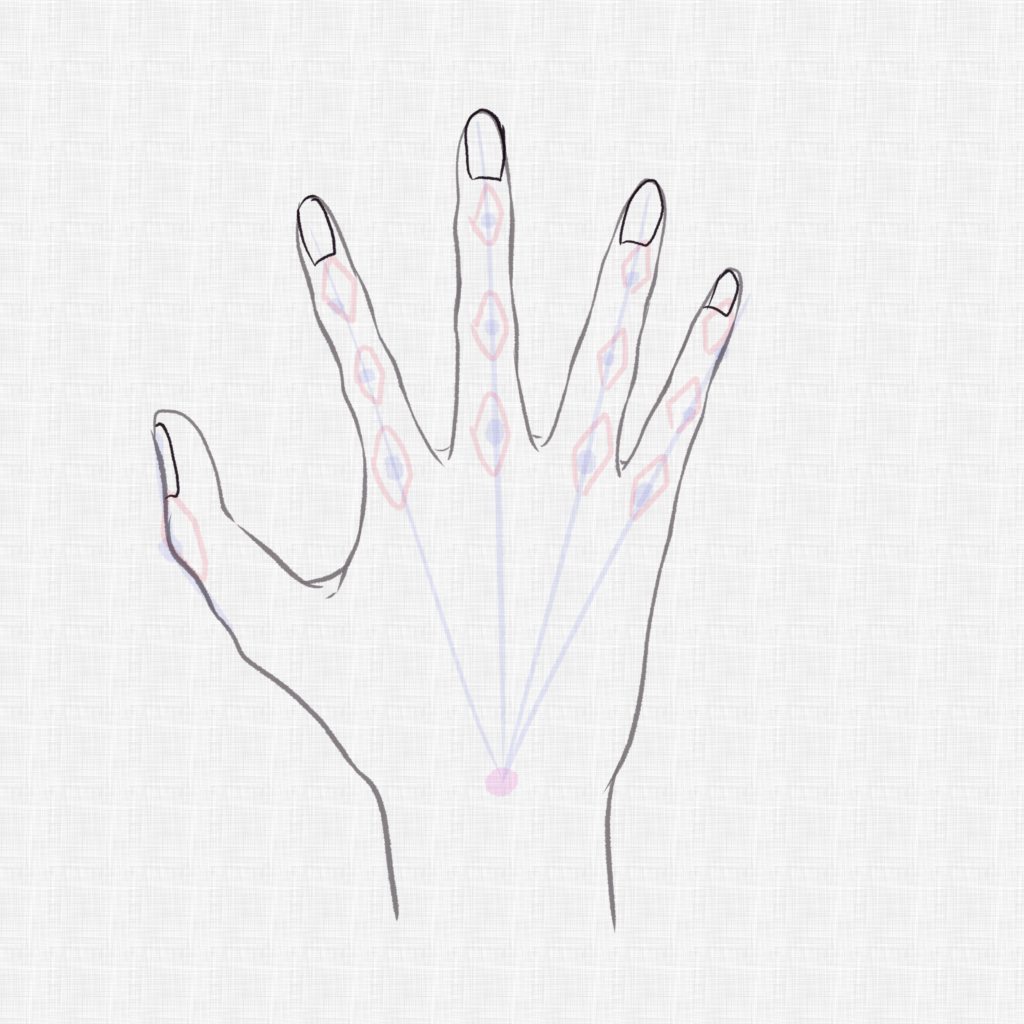
Now add the nails. Two curved vertical lines and one curved horizontal line will do.
Step 5: The Knuckle’s Skin.
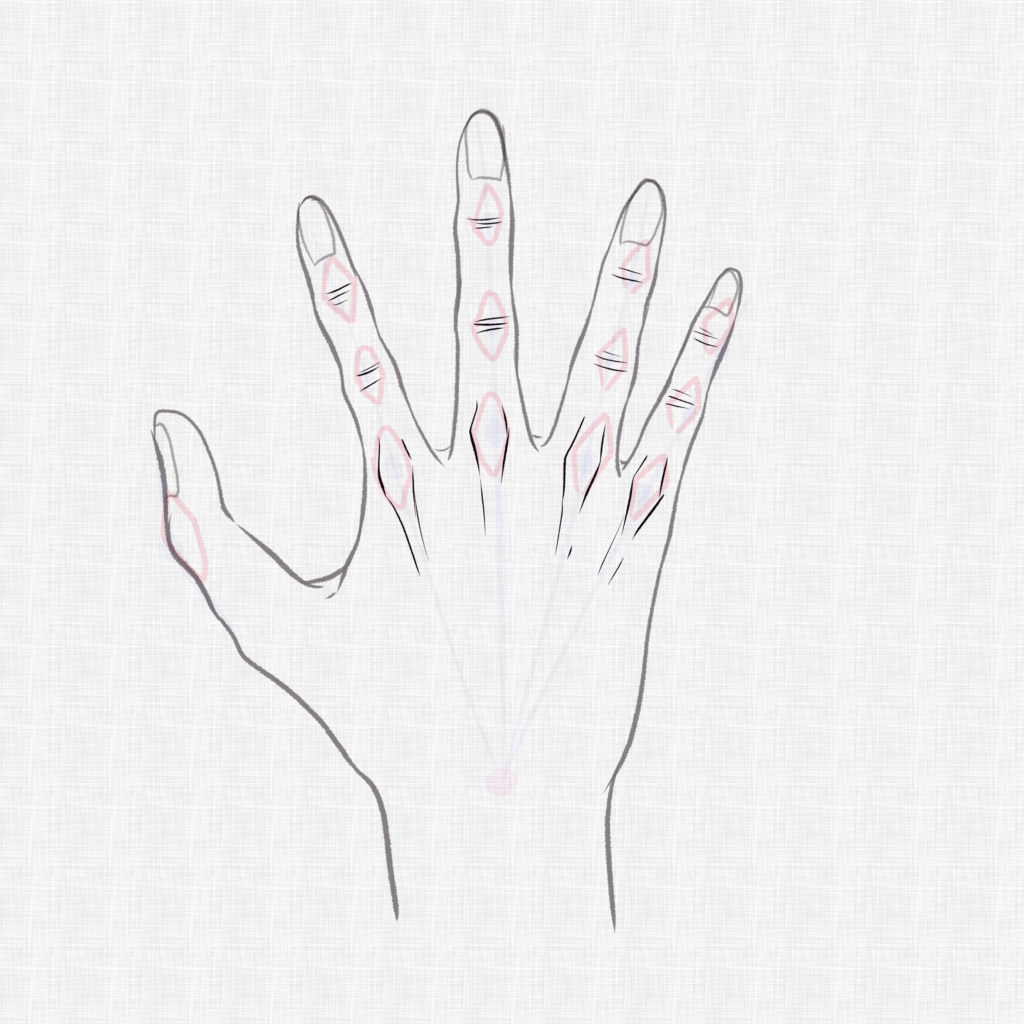
Now we just have to add the skin details for the knuckles and metacarpal bones, just hinting the positions so that we can shade and blend them later.
Step 6: Shade the Hand
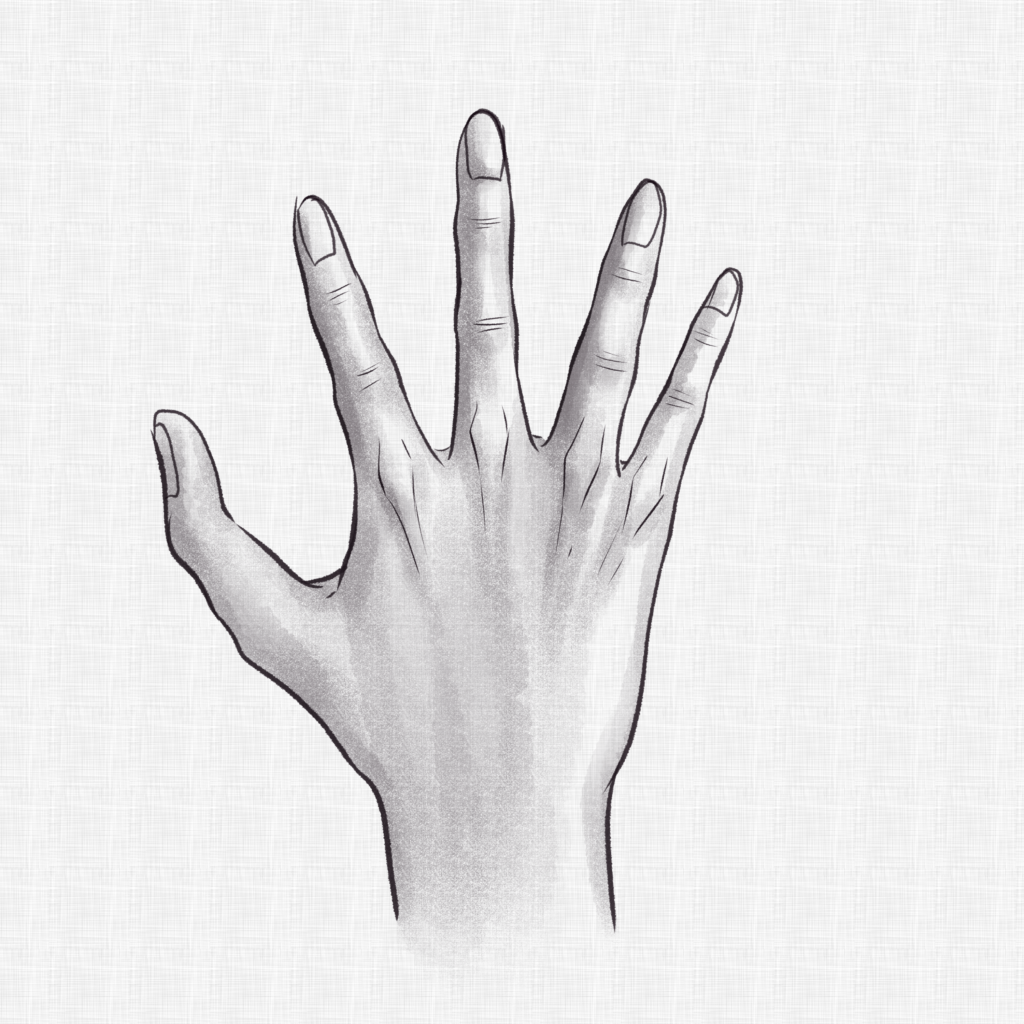
Apply soft traces around the fingers giving the illusion of volume and shade also under the knuckles of the fingers softly, for the lower knuckles, shade around them, following the shape we hinted earlier. Blend your traces and erase the excedentes of graphite.
Final Step: Deepen the Shadows and Add Details
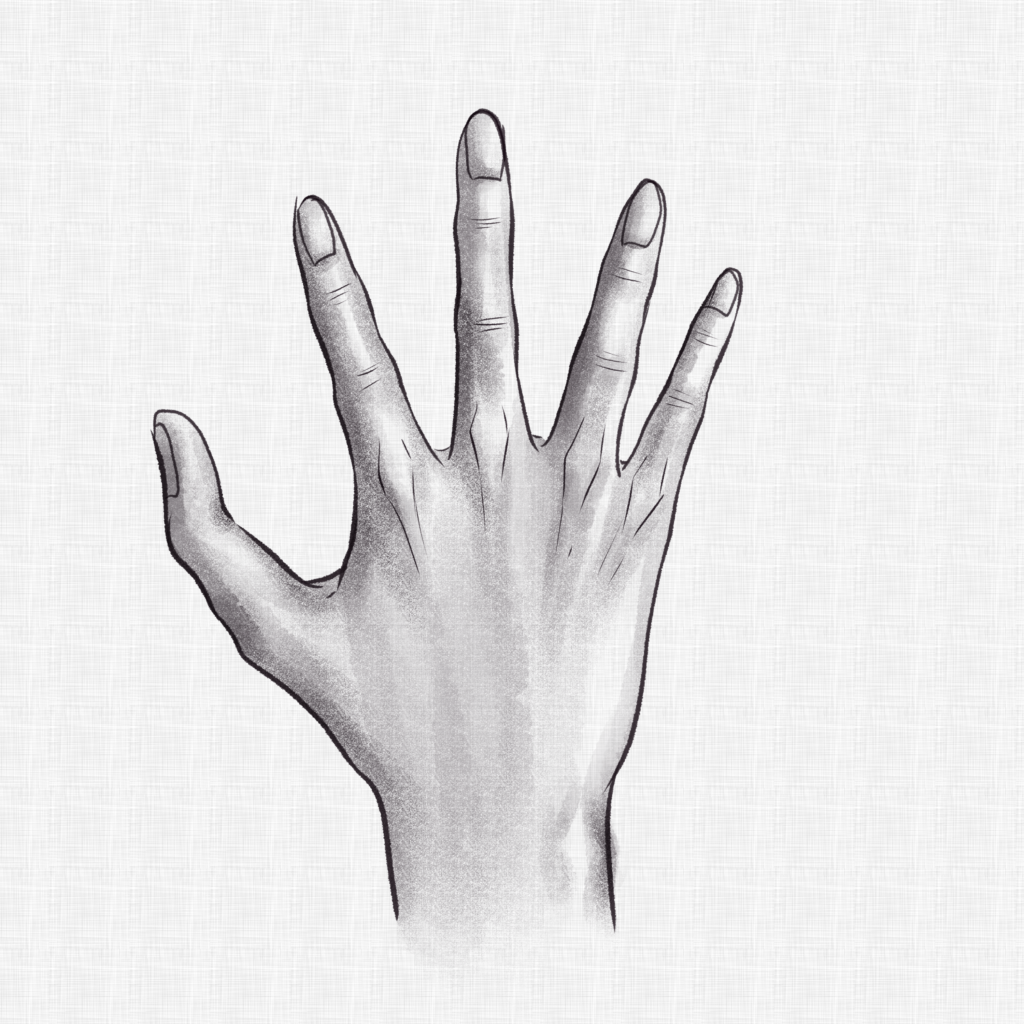
Now we’re going to take into consideration where the light is coming from and shade the parts where the shadows are casted strongly. We’re not going to use our blending tool but just trace with soft circular movements this will give the illusion of our skin’s texture and a more realistic look.
And that’s it! I hope you learned more about hands, I hope you practice as well, and thank you for reading this article and for drawing a hand with me!
